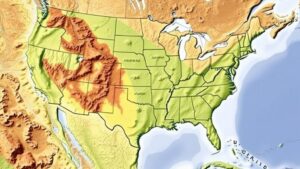Using AI to Decode Historical Mining Claims for Hidden Gold Veins
Using AI to Decode Historical Mining Claims for Hidden Gold Veins
The pursuit of gold has long fascinated humankind, driving exploration and settlement across continents. Historical mining claims provide a rich source of information, yet they often remain underutilized due to their complexity and the sheer volume of data. Recent advancements in artificial intelligence (AI) offer a viable solution for decoding these historical documents to identify potential hidden gold veins. This article explores the application of AI in analyzing mining claims, with a focus on methods, benefits, and real-world implications.
The Historical Context of Mining Claims
The Gold Rush of the mid-19th century in the United States, particularly during 1848-1855, represents a significant period when prospectors flocked to areas like California, Alaska, and Nevada in search of fortune. Mining claims were documented extensively, but many records are scattered and stored in various forms such as handwritten notebooks, maps, and government filings. According to the United States Geological Survey (USGS), over 3 million mining claims were filed throughout the countrys history, yet many remain unexplored for their hidden gold potential.
AI Technologies and Their Application
AI encompasses a range of technologies, and its application to decode historical mining claims can be approached through several methodologies:
- Natural Language Processing (NLP): NLP enables the extraction of relevant data from unstructured text. Documents can be scanned and converted into searchable formats, identifying potential gold veins based on certain keywords and phrases related to geological formations.
- Machine Learning Algorithms: These algorithms can analyze patterns in historical data. By training models on known productive mining claims, AI can predict areas of unexplored potential.
- Geospatial Analysis: Combining AI with Geographic Information System (GIS) data allows for the visualization and analysis of spatial relationships. This method can reveal geological features that are typically associated with gold deposits.
Benefits of Using AI in Mining Exploration
The introduction of AI technologies to decode mining claims offers several advantages:
- Efficiency: AI can process vast amounts of data at a speed unattainable by humans. For example, a recent study by the National Mining Association highlighted that AI systems can analyze thousands of mining claims in a fraction of the time it would take a team of geologists.
- Improved Accuracy: Machine learning models, when trained correctly, can enhance prediction accuracy. For example, a mining company that adopted AI-driven predictive analytics reported a 25% increase in successful exploratory drilling outcomes.
- Cost-Effectiveness: By streamlining processes and reducing the need for extensive manual surveys, AI can significantly cut exploration costs. The Boulder Gold Group, utilizing AI tools, estimated savings of up to $500,000 annually in operational expenses.
Case Studies and Real-World Applications
Several organizations have successfully integrated AI in decodifying historical mining claims with promising results. Notably:
- GoldSpot Discoveries: This Canadian firm has utilized AI to analyze historical data from mining claims across the Abitibi Greenstone Belt. The result was the identification of several new drilling targets previously overlooked by traditional methods.
- Predictive Discovery: An Australian mining company employed AI-driven analysis on legacy claims in West Africa. Within months, they were able to identify hidden gold reserves, leading to a new mining venture.
Challenges and Future Directions
Despite its many advantages, the integration of AI into the mining sector does pose challenges:
- Data Quality: The efficacy of AI tools relies heavily on the quality of input data. Historical mining claims can include incomplete records, ambiguous terminology, or inconsistent geographic labeling.
- Investment Costs: The initial investment needed for AI technology and training can be substantial, posing a barrier for smaller operations.
Looking forward, further advancements in technology, including enhanced data collection methods and improved machine learning models, may overcome these challenges. Collaboration within the mining industry and academia will be essential in developing standardized approaches to utilizing AI in exploring historical mining claims.
Actionable Takeaways
For mining companies seeking to leverage AI in their operations, consider the following actions:
- Invest in AI technologies tailored for mining applications to analyze historical data effectively.
- Collaborate with data scientists to enhance the development of AI models focused on regional geological characteristics.
- Conduct a thorough evaluation of historical mining claims to uncover overlooked gold veins.
To wrap up, the intersection of AI and mining exploration provides a promising frontier for uncovering hidden gold potential. By efficiently decoding historical mining claims, the industry can enhance exploration strategies, reduce costs, and ultimately increase profitability.



